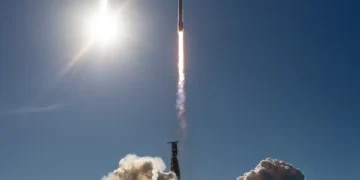Introduction: A Major Arms Deal in the Making
In a significant move that signals deepening military and diplomatic ties, the United States is preparing to offer Saudi Arabia a comprehensive arms package valued at more than $100 billion. According to six sources familiar with the matter, this landmark defense deal is expected to be formally announced during former President Donald Trump’s upcoming visit to the kingdom in May. This package could mark one of the largest arms sales in U.S. history, emphasizing Washington’s continued support for Riyadh as a key ally in the Middle East.
Details of the Arms Package
While specific details of the arms included in the package remain confidential, sources suggest that the deal will encompass a wide range of advanced weaponry. This may include missile defense systems, precision-guided munitions, tanks, fighter jets, and sophisticated radar systems. The aim is to bolster Saudi Arabia’s defense capabilities amid rising tensions in the region, particularly with Iran.
The arms deal is part of Washington’s broader strategy to ensure the security of its allies in the Gulf while also enhancing its own economic and strategic interests. U.S. defense manufacturers, including Lockheed Martin and Raytheon, are expected to play a major role in fulfilling this contract, which could create thousands of jobs and boost the American defense sector.
Context and Strategic Importance
The deal underscores the strategic partnership between the U.S. and Saudi Arabia, which has spanned decades. Saudi Arabia remains one of the largest purchasers of American arms and a critical ally in counterterrorism efforts and regional security.
In recent years, Riyadh has faced growing threats from Iranian-backed militias and Houthi rebels in Yemen, making air defense and counter-strike capabilities crucial for its national defense. The arms package, therefore, aims to ensure that Saudi Arabia can defend itself against potential aggression and maintain stability in the Persian Gulf region.
Comparison to Previous Proposals
This proposed arms sale comes in stark contrast to the approach taken by former U.S. President Joe Biden. Biden’s administration had attempted to finalize a defense agreement with Saudi Arabia as part of a broader regional deal that included efforts to normalize relations between Riyadh and Tel Aviv.
The Biden proposal was centered on providing Saudi Arabia access to more sophisticated American weapons in exchange for commitments to reduce arms imports from China and limit Chinese investments in Saudi infrastructure. However, that initiative faced several roadblocks and ultimately failed to materialize due to political and strategic differences between the two countries.
Geopolitical Implications: US, Saudi Arabia, and China
One of the key drivers behind the Trump-era arms deal is the growing influence of China in the Middle East. In recent years, China has significantly expanded its footprint in the Gulf region through economic investments, infrastructure development under the Belt and Road Initiative, and arms sales.
Washington’s proposed arms package is seen as a countermeasure to limit Beijing’s growing sway in the region and reinforce the U.S.-Saudi security alliance. By offering advanced military technology and economic incentives, the U.S. aims to keep Riyadh closely aligned with Western geopolitical interests.
The Trump Factor: Reviving Ties with the Gulf
Former President Donald Trump’s visit to Saudi Arabia is being viewed as a major diplomatic event that could reshape the dynamics of U.S. foreign policy in the Middle East. Trump had previously prioritized close ties with Gulf monarchies and struck several major arms deals during his tenure, viewing them as crucial to American strategic and economic interests.
Trump’s renewed engagement with the kingdom could potentially rekindle relationships that had become strained during the Biden administration. The announcement of the arms deal during this visit is expected to send a strong message of renewed cooperation and alignment.
Official Silence but Signals of Progress
While the White House and the Saudi government’s communications office have not issued formal comments on the matter, signs suggest that both sides are on board with the proposed deal. A U.S. defense official noted that “under President Trump’s leadership, our defense relationship with the Kingdom of Saudi Arabia is stronger than ever,” further indicating the likelihood of a favorable outcome.
Criticism and Human Rights Concerns
Despite the potential benefits of the arms deal, critics have raised concerns about its implications for human rights and regional stability. Human rights organizations have consistently criticized U.S. arms sales to Saudi Arabia, citing the kingdom’s involvement in the Yemen conflict and its domestic human rights record.
There are fears that providing advanced weaponry to Saudi Arabia could exacerbate conflicts in the region, particularly in Yemen, where civilian casualties have drawn widespread condemnation. U.S. lawmakers and civil society groups may push back against the deal, demanding greater accountability and transparency.
Economic and Defense Industry Impact
On the economic front, the $100 billion arms deal could provide a significant boost to the U.S. defense industry. Companies like Boeing, Northrop Grumman, and General Dynamics could also benefit through subcontracting and technology support services.
Such a massive transaction would not only support American jobs but also reinforce the United States’ position as the world’s largest arms exporter. It would also highlight the continued importance of foreign military sales (FMS) as a tool of diplomacy and economic growth.
Conclusion: A Deal with Far-Reaching Consequences
The proposed $100 billion U.S. arms package to Saudi Arabia marks a critical juncture in the defense and diplomatic relationship between the two countries. As the formal announcement looms during Donald Trump’s visit, the world will be closely watching how this deal shapes the strategic balance in the Middle East.
While the deal offers economic and strategic gains, it also comes with challenges related to geopolitics, human rights, and regional conflict. Nonetheless, it represents a clear signal of intent: the U.S. is committed to maintaining its influence in the Middle East and reinforcing its alliances in a rapidly shifting global landscape.

























